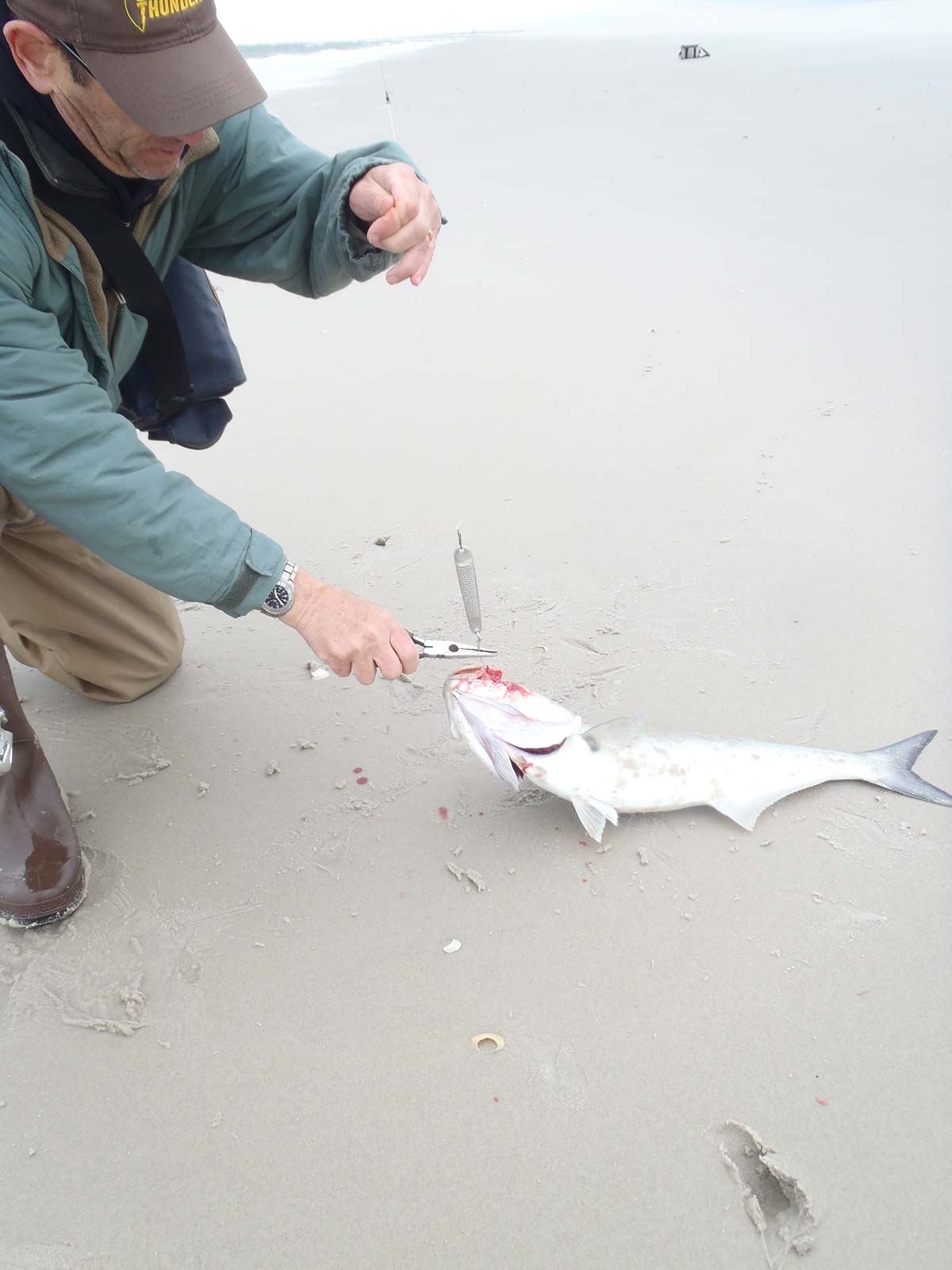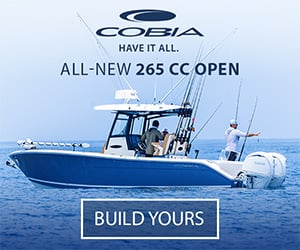Too heavy a leader will alter lure performance, are more affected by wind and current, and good knots are more difficult to tie.
Last fall I met an acquaintance who was having trouble with the teaser he was using. He said, “It tangles too often.” I told him I’d make one for him using a special knot taught to me many years ago by Lou Rosado. I promised him my leader would be tangle resistant. I gave him the leader when I saw him, tied in one piece so that a teaser could be easily attached and removed from a loop extending firmly away from the knot. He thanked me, but said, “This is 30-pound test, right?” I replied “yes, why?” He told me he used 50-pound test. This illustrates two points about leaders. First, they are useful when using a teaser, and second 50-pound test is overkill – way overkill. It’s like the Bolsheviks killing the Tsar Romanov family with hundreds of bullets when some of them had hemophilia.

In our plankton-rich waters, fish will not see the leader. You might believe they will, but they will not, and if they do, it will mean nothing to them. The purposes of a leader includes the use of a teaser, safety for the angler, facilitating unhooking, the ability to change lures easily and quickly, preventing line twist that leads to “wind loops,” and protection from braided line cuts.
Safety and protection from braided line go together. I use the leader to land fish in quiet water by wrapping my hand around it before lifting small fish. This helps to tame fish, remove hooks, and facilitates an easy release without dragging fish over sand and/or mud that removes protective slime. A leader also makes it easier to guide a big fish onto the slope of an ocean beach or the edge of quiet water. In both cases leaders made of mono or nylon are less likely to cut skin because there are less abrasive than braid fibers.
When it comes to leaders, less is definitely more. Sadly, for some anglers, 50-pound test line is used to compensate for poor knots. You see, a fifty percent knot tied with 50-pound test gives you a 25-pound pull, while the same knot with 20-pound test gives you only 10 pounds of pull. The moral of the story is to learn to tie good knots.
Fifty-pound leaders will alter lure performance, are more affected by wind and current, and good knots are more difficult to tie. You can use quality monofilament or Perlon. I use Perlon because it takes a lot of abuse, and lacks a strong memory. Even when coiled for storage, it will straighten within a few casts. I use 20-pound test leaders on my 7-foot rod, and 30-pound test with both 9– and 11-foot rods. Unless you fish from jetties, around bridges, pilings, and rock piles, these are the only two strengths you need; if you tie a good knot!
Perlon usually comes in lengths of 40 inches. Starting with a full length, attach a barrel swivel (#7) to one end using an improved clinch knot. An improved clinch knot is 95% strong when properly tied. Use five turns for mono. Adjust the length before adding the snap so the end product will be 18 to 20 inches for a 9-foot rod, and about 24 inches for an 11-footer. Using an improved clinch knot, tie on a Tactical Anglers 125-pound paper clip style snap on the end opposite the swivel. The paper clip snap makes lure changing easy and it will never open accidentally. Finally, tie the running line to the swivel’s other loop, using ten turns for braid. Pull on both running line and tag end. It’s simple, easy, and efficient. The materials are important, but the key is your ability to tie a good improved clinch knot so there are no overlaps or bulges, and the knot looks like a stack of coins. Practice the knot with old mono while watching television until you get it perfect every time.




